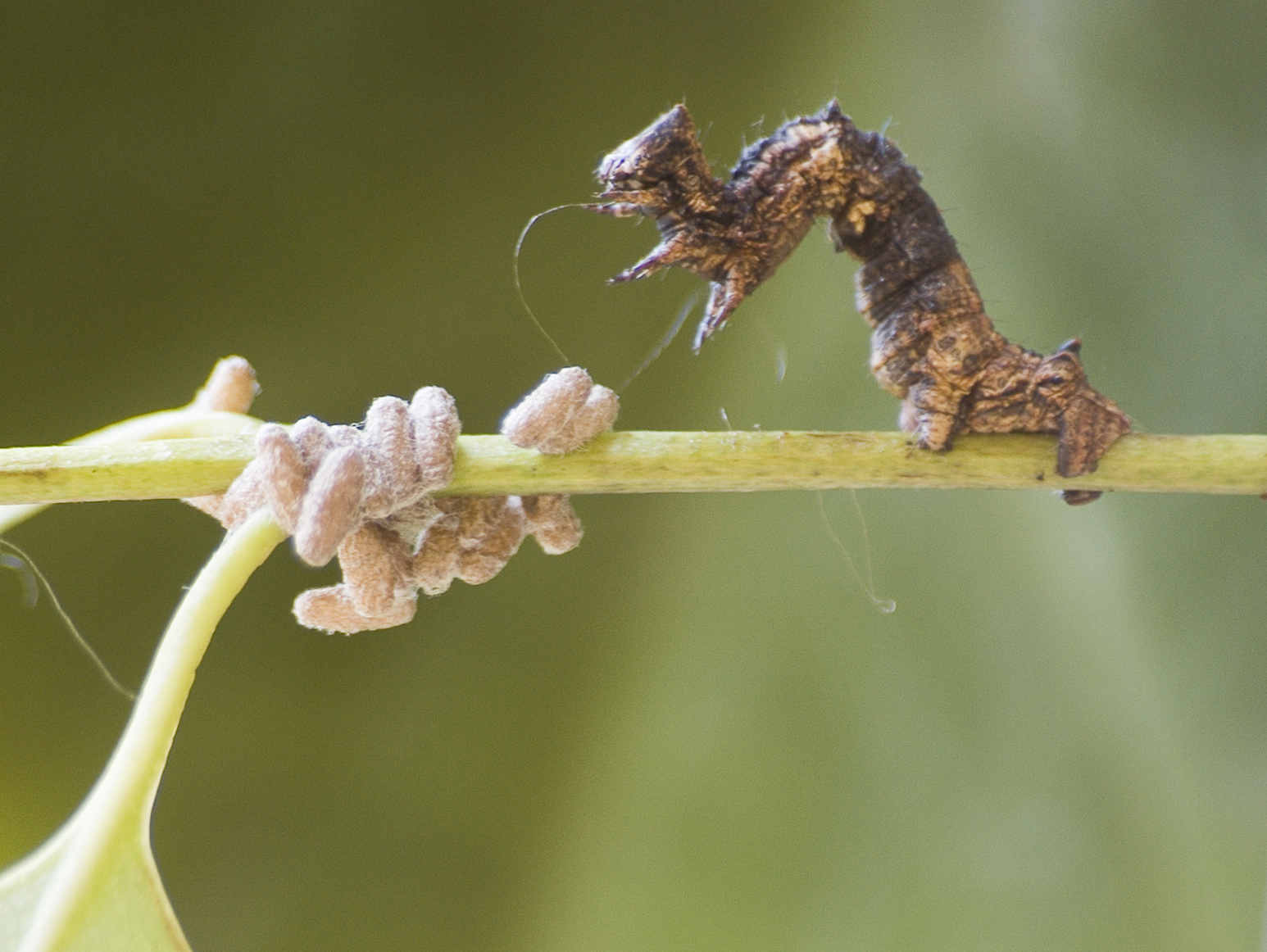Glyptapanteles is a genus of parasitoid wasps belonging to the family Braconidae, known for their fascinating and intricate reproductive strategy. These tiny insects, typically measuring only a few millimeters in length, play a crucial role in regulating populations of various host insects in ecosystems worldwide. The life cycle of Glyptapanteles begins when adult female wasps lay their eggs inside the bodies of caterpillars, typically belonging to species in the moth family. Once the eggs hatch, the wasp larvae develop and feed on the internal tissues of the caterpillar host. What makes Glyptapanteles particularly remarkable is their manipulation of the behavior of their host caterpillars. Instead of immediately killing the caterpillar, the larvae release chemicals that alter its behavior, causing it to act as a bodyguard for the developing wasp larvae. As the larvae mature within the caterpillar’s body, they induce the caterpillar to guard them against potential predators. Remarkably, the caterpillar will fiercely defend the developing wasp larvae against any threats, even sacrificing its own life in the process. Once the wasp larvae complete their development, they emerge from the caterpillar’s body, often killing it in the process. The adult wasps then mate, and the females seek out new host caterpillars to continue the cycle.
Glyptapanteles
